Atlas fabric: what is, types and composition
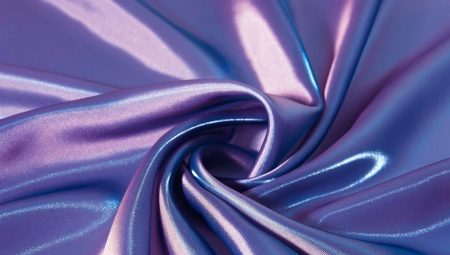
Atlas is one of the most popular silk fabrics today. However, as often happens in the textile industry, the same word can mean different types of matter, therefore it is worthwhile to carefully understand what kind of fabric it is and how to handle it correctly.
What it is?
As befits a silk fabric, atlas was invented in China two thousand years ago. At the same time, he came to Europe through the Arabs, who gave him the name ("atlas" from Arabic - "smooth"). Satin material is characterized by high strength and durability, while it is amazingly delicate to the touch and looks noble, so it should not be surprising that even at its enormous cost, it quickly became popular far beyond its homeland.
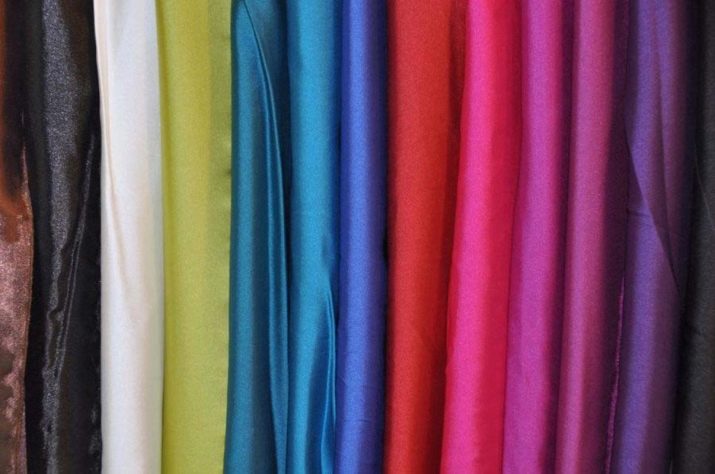
The high cost of the material was largely due to the small volume of world production of natural silk, because for centuries this fabric was used only for the needs of the richest segments of the population. The twentieth century became a turning point, because a synthetic revolution took place in all industries, and the atlas also became synthetic. Probably, this somewhat reduced the delightful properties of the original fabric, but now it has become generally available, and a natural atlas is very expensive even today.
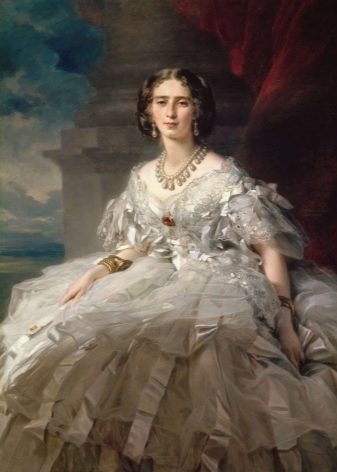
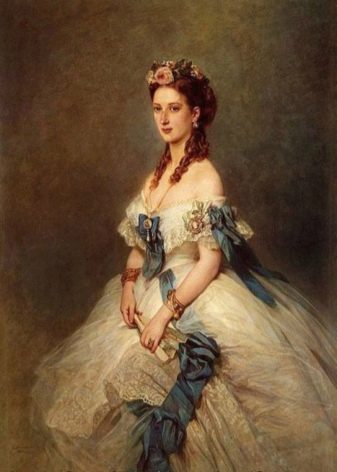
The production of atlas involves a special technology of weaving silk threads, it is called so - satin, or satin. As a result of this production method, the fabric is usually shiny and smooth on only one side, while the inner side has a matte tint.To neutralize this disadvantage, manufacturers have mastered the technique of producing a double-sided atlas, which requires more threads, but the shine is observed on both sides.

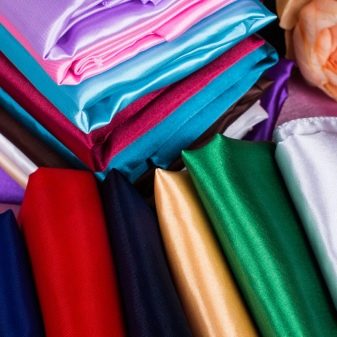
Composition
Initially, the concept of atlas was quite accurate - it was assumed a special weaving and the use of exclusively natural silk threads. Today, under the same term, only the original weave is already assumed, because various cheaper additives can be included in the composition, but sometimes modern fabric, called atlas, does not contain a single silk thread at all.
Most often, synthetic fibers are introduced into the fabric structure - polyester and viscose, nylon and acetate. Among natural threads, cotton remains an almost uncontested component. The exact composition affects the final properties of the resulting material, and such changes are not always unambiguously positive, so when choosing, you should carefully read what is written on the tag. The same fact allows us to talk about the advantages and disadvantages of satin material only with certain reservations, because the exact characteristics depend on the components and their proportions.
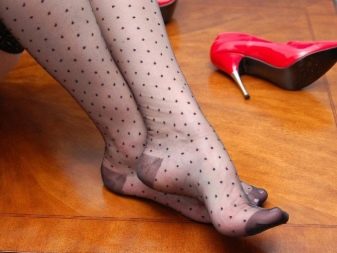
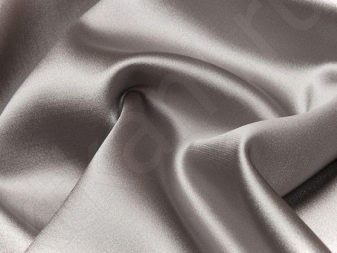
Advantages and disadvantages
As mentioned above, each section of the atlas is a kind of surprise, whose properties are not so easy to guess in advance. Considering the advantages and disadvantages, we will highlight those that are found in most manufacturers, but cheap products can unpleasantly surprise, while in expensive ones, on the contrary, an antidote can be found for some problems.
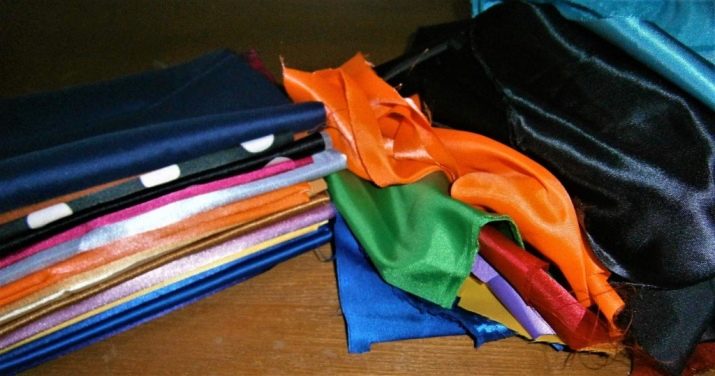
Let's start with the good:
- the atlas is almost always hypoallergenic, it not only does not provoke attacks by itself, but does not even accumulate dust in itself;
- hygroscopic material easily passes any amount of moisture through itself and is characterized by an increased drying rate after washing;
- things from the atlas do not need additional use of an antistatic agent - matter does not accumulate electricity, which, in particular, does not attract dust;
- almost all types of satin material are quite durable, and brands such as rap or drapery satin stand out even among their counterparts;
- with proper and timely care, satin products are able to serve their owner for many years without losing their original appearance;
- atlas is never transparent - its significant density allows it to be effectively used as curtains to protect against bright natural light;
- the material is well suited for drapery, which, in combination with its attractive appearance, further contributes to the active use of satin in decors and interiors.
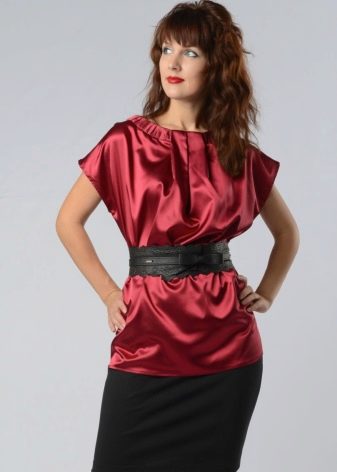
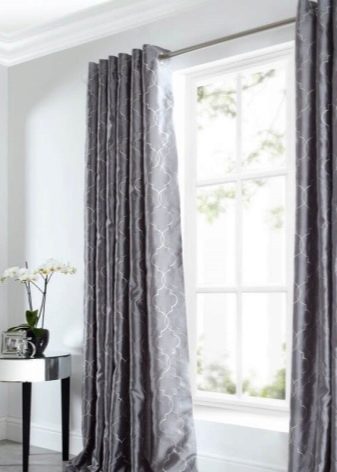
For all its many advantages, satin is not an ideal fabric - it also has its drawbacks. In many ways, it is precisely the desire to level them that is due to the active use of various additives by manufacturers, but in most cases such experiments do not give the expected result. When purchasing an atlas or products made from it, be prepared for the following pitfalls:
- the material does not like high temperatures, when washing in hot water, products made from it tend to shrink and lose their shape, which somewhat complicates the washing of complex dirt and always leaves the risk of unintentional damage to things;
- the atlas is very strong as long as it is intact, however, the torn edges have an unusual property called "flowability", therefore, only an experienced craftsman can adequately mend the product;
- many types of fabrics, especially those with a high content of acetate in the composition, tend to stretch even under their own weight, therefore, improper hanging can spoil the purchase at an accelerated pace;
- dense satin is often used for sewing "aristocratic" curtains, however, its curtain variety has a significant weight, so this factor should be taken into account when installing cornices.

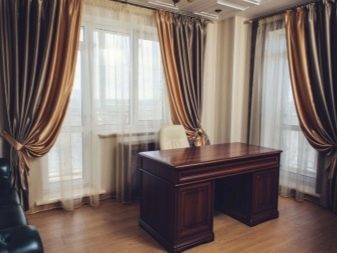
Types and their characteristics
The variety of additives used in the process of making satin fabric has led to the fact that they began to distinguish several of its varieties, which have a special specificity. Many of these names are heard today, others are less known, but we will give a description only to those that are used most often these days.
- Satin - one of two completely natural varieties of satin (the other is the original, pure silk material). Cotton is used as the only additive here, which significantly reduces the cost of fabric.
- Crepe - a double-sided variety of satin, combining softness and light roughness. The latter characteristic is achieved due to the peculiarities of production - the transverse threads are twisted here.
- Duchess - one of the densest varieties of atlas, the threads are intertwined here very densely, which makes the matter seem tougher than its counterparts.
- Atlas Dupont resembles the above-described variety, but differs from it in a much more pronounced brilliance. It is this variation that is generally considered the most brilliant of all varieties.
- Taffeta - a popular fabric, whose high density does not greatly affect the weight of things made from it. Taffeta has a special overflow, according to which a knowledgeable person can easily distinguish it from something else.
- So-called Russian atlas made from raw silk, but has a somewhat unusual production technology. In this case, the weave of the threads is finer, which increases the density of the fabric.
- For atlas varieties antique a well-visible texture is characteristic. This effect is achieved by alternately using threads of different thicknesses.
- Stretch satin involves intensive use of well-stretching lycra, therefore things from it usually turn out to be tight. Another advantage of matter is that it is not prone to wrinkling.
- Stuffed crash - fabric with a bright shine, which is produced by the method of squeezing and pressing threads.

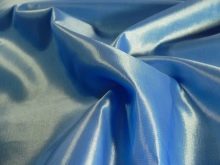

Variety of designs
The original atlas was one-color, one-colored. In combination with its aristocratic brilliance, bright colors such as red, blue, green or lilac looked truly irresistible. In the old days, the choice of clothing colors for the majority of the population was extremely small, therefore, even a monochromatic, but bright color was considered royal chic. Today, there are much more dyes and they are available everywhere, because satin products are made white, black and even matte, which is not originally characteristic of this material.
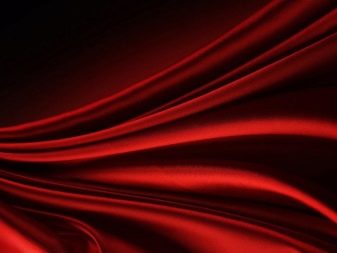
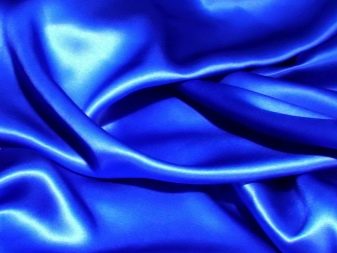
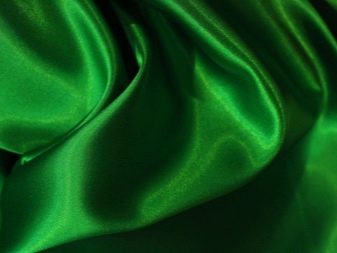
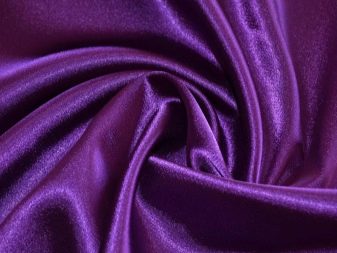
At the same time, modern technologies make it possible to produce things with a pattern, more intensely emphasizing the individuality of the owner and contributing to aesthetics. Patterns applied to satin clothing and accessories are done in one of four basic ways.
- Embroidery. One of the old classical methods, when a pattern is applied over a plain fabric using a needle with multi-colored threads and a needle. In ancient times, such processing was carried out exclusively by hand, today it is usually performed by machines.


- Jacquard weave. Another relatively old method that vaguely resembles embroidery. Here, additional threads are also used to apply the pattern, but the image is transmitted not only due to the different color, but also due to the three-dimensional volume.
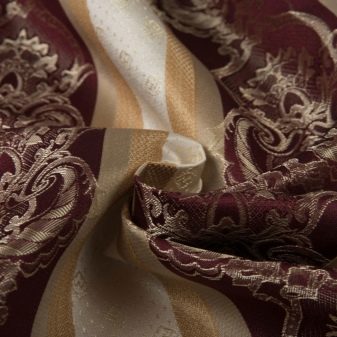
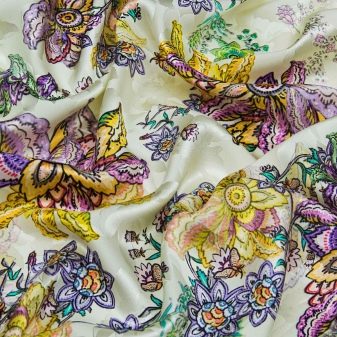
- Seal. This method is similar to the one still used in many printing houses - the drawing is made out with paint that fills in the contours of the future image.
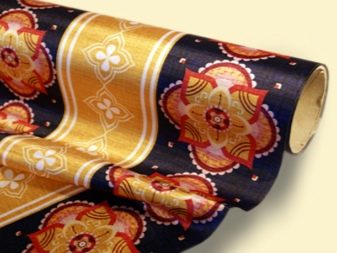
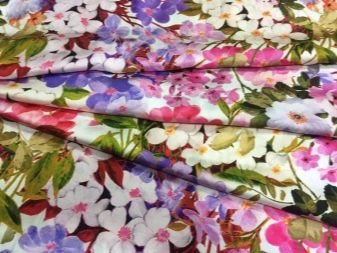
- Embossing. Another method that resembles printing, but differs in the method of applying paints. In this case, a special engraved shaft is used, which makes it possible to obtain a believable impression of the image on the weave.
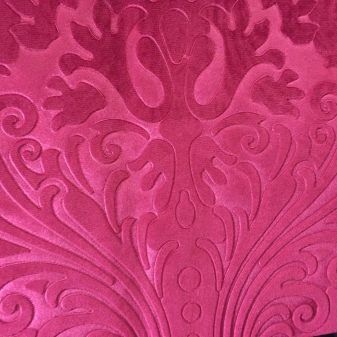
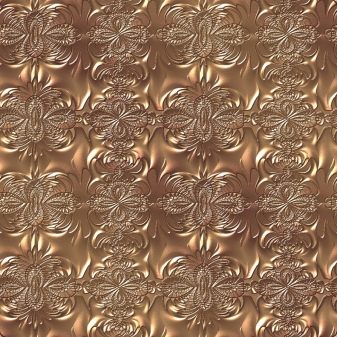
Application
At a time when the atlas was of great value and enormous rarity, it was used only by either very rich people, or simply by the rich, but in exceptional cases.Today, due to a significant reduction in the cost of production of synthetic analogs of the atlas, almost anything can be sewn from matter with this name, although the question of expediency remains relevant. When deciding what to make from atlas, it is worth starting from its main positive aspects. Here are some good examples:
- taking into account the solemn appearance of the atlas, festive costumes are sewn from its best samples - various expensive dresses, men's suits and so on;
- the tenderness and softness of the material contributes to active wearing, therefore, it is appropriate to sew lingerie and other nightwear from satin fabric;
- the above criteria are also relevant for sewing home textiles like curtains and bed linen, only for these needs different types of fabric should be used;
- the brightness and originality of satin is widely used to emphasize the image and stand out from the crowd, therefore numerous small accessories are made from it, such as umbrellas, ladies' hats, ties, gloves and bows;
- the low cost of some modern types of fabric, as well as its resistance to the formation of folds, are ideal for sewing everyday clothes, mainly ladies' (remember the shine);
- the high strength of the fabric and its ability to dry quickly has found application in the manufacture of lining for outerwear.

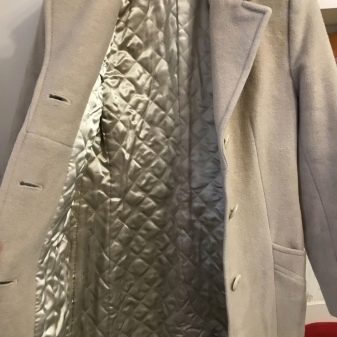
Some types of atlas have such specific characteristics that it is even customary to name such fabric in accordance with the main sphere of its use.
So, the curtain atlas is well suited for sewing very dense and heavy curtains, but the shoe type of fabric is used for sewing ballet pointe shoes that do not restrict movement, but also do not allow you to feel barefoot.
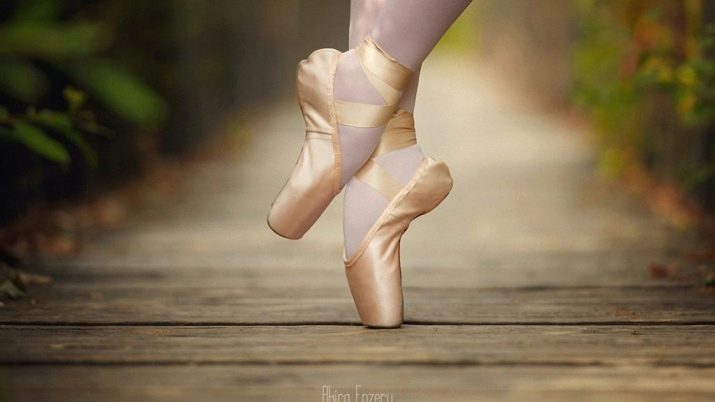
Care
Sadly, atlas is a rather whimsical fabric, and the recommendations on the label should be followed with all the severity, since this is the only way to meet the needs of things from a specific type of matter. You cannot use hot water during washing - it is best to perform the procedure by hand after a short soak in cold water. It is allowed to wash the atlas in a machine, but only at a minimum temperature and without spinning; during hand washing, you can also neither rub nor twist the material. It is possible to remove greasy stains or streaks from water only with mild detergents, but an atlas based on acetate fibers generally does not accept washing - it is cleaned only dry.
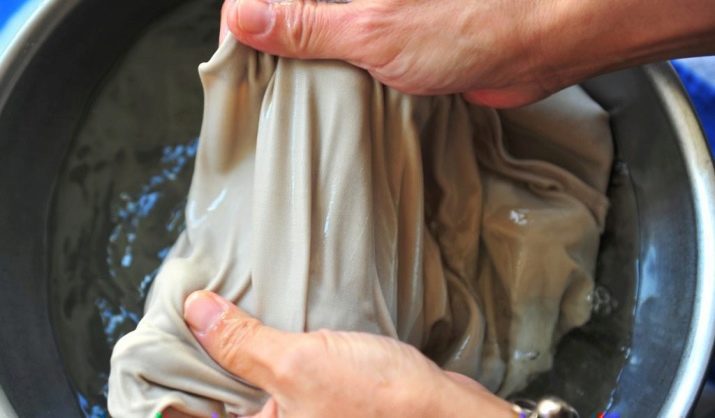
There is only one available way of drying matter - the thing is laid out horizontally on a dry towel, the use of any dryers or the corresponding functions of the washing machine is unacceptable.
Oddly enough, with all this, it is still possible to iron the satin, but this is done only from the inside out and through the protective layer of another fabric, as well as at the minimum heating temperature of the iron.
This atlas is not prone to deformations, however, synthetic analogs can stretch and lose their shape. It is usually impossible to remove the puffs that have already appeared, because things made of this material should be properly stored - heavy products should not hang constantly. Experts advise using special covers for storing satin fabric; high temperatures or high humidity are unacceptable for such things.
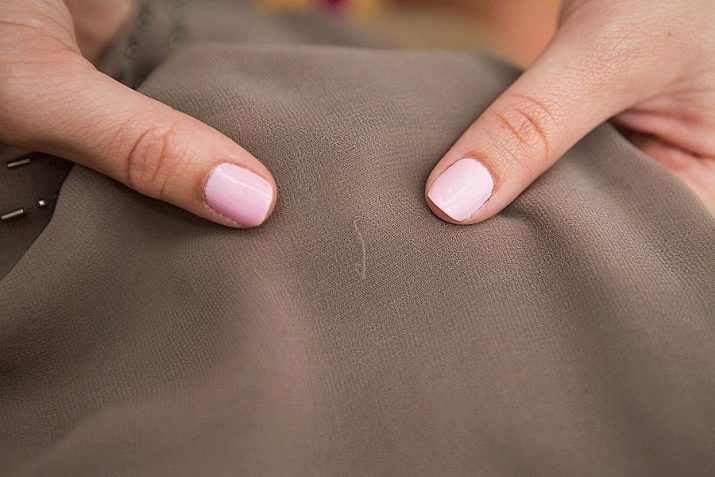
For an overview of Atlas Stretch fabric, see the video below.








